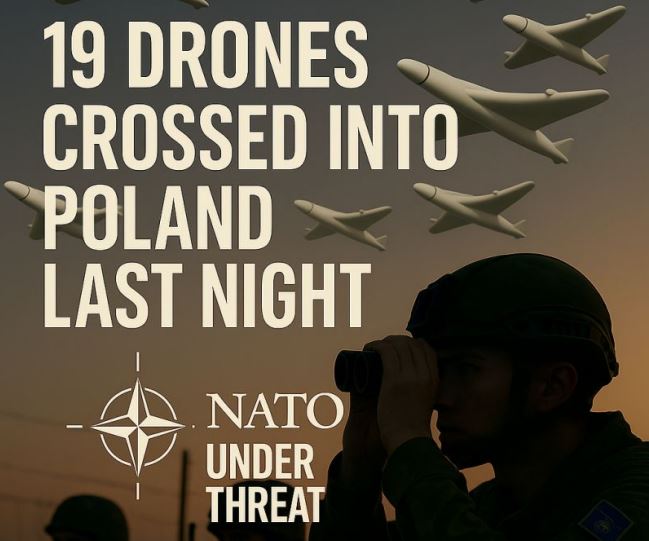Last night’s drone incursion into Polish airspace wasn’t just another security incident — it was a live test of NATO’s defences, psychological resilience, and political unity. As Russia escalates hybrid operations across Europe’s eastern flank, the line between probing and provoking has never been thinner.

Nineteen drones crossed into Poland last night.
Four were intercepted, several landed intact – identified today as Russian Gerbera UAVs, widely used as decoys to distract air defence systems.
Why does this matter?
Because it’s not only about the drones. It’s about what they represent:
Testing NATO’s defences – reconnaissance for weak points in radar coverage, response times, and rules of engagement.
Psychological pressure – shaking public confidence that borders are secure.
Escalation signalling – reminding Europe that no frontline is truly safe.
Normalisation of violations – each “small” incursion lowers the threshold for the next one.
Analysts told the BBC these Gerbera drones likely ran out of fuel rather than being shot down, and that the deliberate scale of the incursion shows Moscow’s intent to probe NATO’s cohesion.
Meanwhile in London, the Defence Ministers of the E5 (UK, France, Germany, Italy, and Poland) met to coordinate responses to exactly these kinds of hybrid threats. The timing could not be sharper.
This convergence of events underscores a reality:
Hybrid threats are accelerating.
Defence and security innovation must keep pace.
Europe’s resilience depends on anticipating what comes next, not reacting late.
For investors, policymakers, and operators alike, the signal is clear:
We are in a live test environment, where the boundary between provocation and escalation is constantly being blurred.


